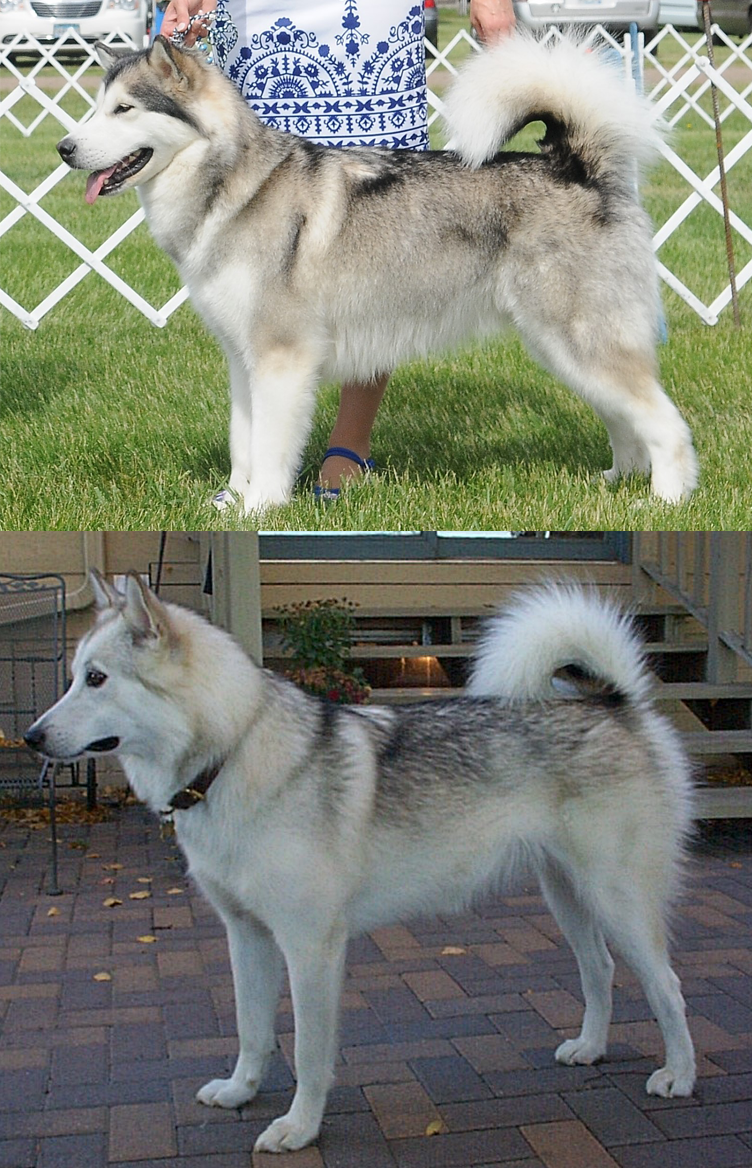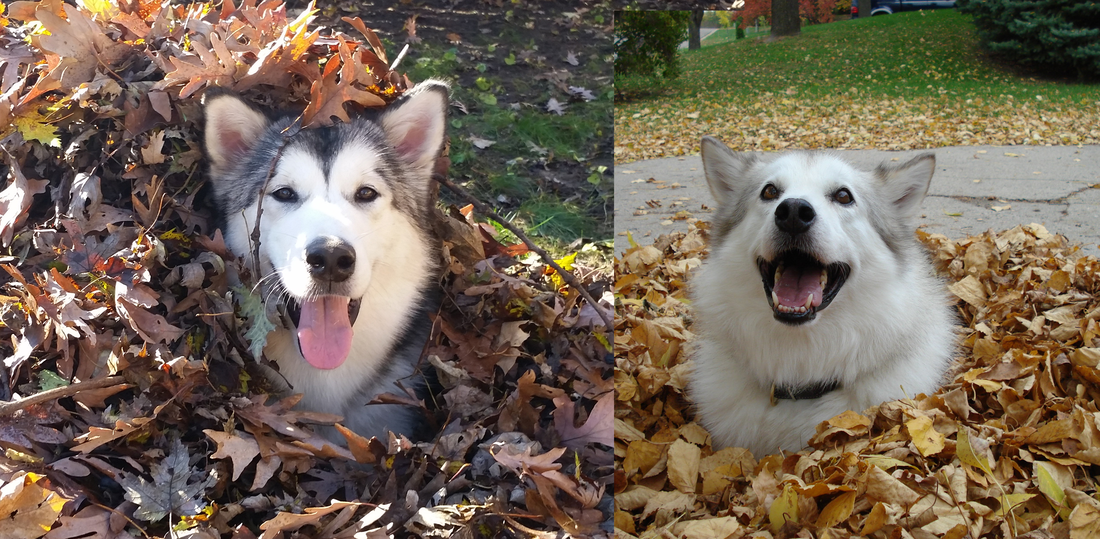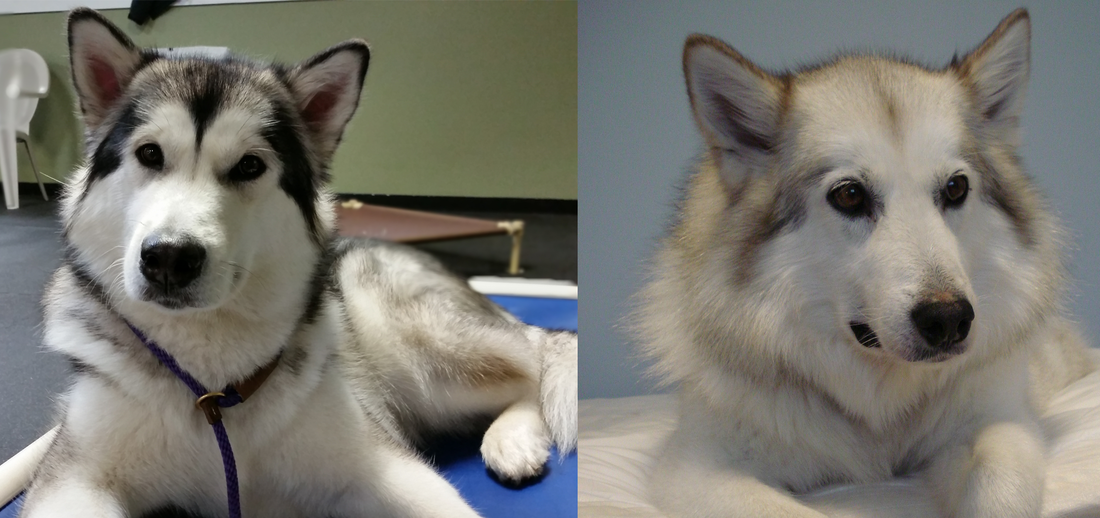Why Go to a Reputable Breeder?
Twenty-three years ago, I got my first malamute from a backyard breeder (BYB). I would not wish the experience on my worst enemy.
Her name was Frosti. She was flea-infested, neglected, desperately underweight, and frightened of the world. Those first few months were AWFUL; full of stress and tears. Some things never got better. She was severely dysplastic, explosively dog aggressive, and threw up nearly every day of her life no matter what I fed her. Solid stools were a mythical concept. She could only walk a block before her hips and knees impeded her ability to walk. When the vet confirmed that Frosti had hip dysplasia, I called the breeder, thinking she’d want to know. She said she would put Frosti to sleep if I brought her back. I was horrified! Needless to say, I ended all contact. At 8 years old, a malignant tumor appeared on her hind leg. Surgery prolonged her life two years. Frosti was loved until the day she died at a too-young 10 years old.
When considering my next dog, I REFUSED to make the same mistakes. I researched, researched, researched. Frosti’s breeder had been 'AKC-registered,' but clearly that designation meant little to nothing. I learned that anyone can register their litter with the AKC. That’s all it is: a registry. It does not guarantee quality dogs or breeding practices. The AKC does not monitor participants of this system. I *did* find that the Alaskan Malamute Club of America (AMCA) purported to do ALL of the above. One must show dedication to the breed’s standard, health, structure, type, and temperament to get on the AMCA breeder's list. It's not a guarantee of perfect health, but it's stacking the deck in favor of a long, healthy life for your malamute.
Frosti had hip dysplasia by 6 months old, so I researched how to avoid my next dog suffering a similar fate. I learned that hip dysplasia is part environmental, part genetic. I planned to: 1) only take my new puppy on short walks on natural surfaces, 2) never run him before he hit 18 months old, 3) keep him lean, 4) discourage him from playing on hard/slippery surfaces, and 5) carry him down stairs until I could no longer handle the weight. I was going to do my part, so I wanted my breeder to do theirs.
Are all backyard breeders veritable monsters like Frosti’s? No, not at all.
Her name was Frosti. She was flea-infested, neglected, desperately underweight, and frightened of the world. Those first few months were AWFUL; full of stress and tears. Some things never got better. She was severely dysplastic, explosively dog aggressive, and threw up nearly every day of her life no matter what I fed her. Solid stools were a mythical concept. She could only walk a block before her hips and knees impeded her ability to walk. When the vet confirmed that Frosti had hip dysplasia, I called the breeder, thinking she’d want to know. She said she would put Frosti to sleep if I brought her back. I was horrified! Needless to say, I ended all contact. At 8 years old, a malignant tumor appeared on her hind leg. Surgery prolonged her life two years. Frosti was loved until the day she died at a too-young 10 years old.
When considering my next dog, I REFUSED to make the same mistakes. I researched, researched, researched. Frosti’s breeder had been 'AKC-registered,' but clearly that designation meant little to nothing. I learned that anyone can register their litter with the AKC. That’s all it is: a registry. It does not guarantee quality dogs or breeding practices. The AKC does not monitor participants of this system. I *did* find that the Alaskan Malamute Club of America (AMCA) purported to do ALL of the above. One must show dedication to the breed’s standard, health, structure, type, and temperament to get on the AMCA breeder's list. It's not a guarantee of perfect health, but it's stacking the deck in favor of a long, healthy life for your malamute.
Frosti had hip dysplasia by 6 months old, so I researched how to avoid my next dog suffering a similar fate. I learned that hip dysplasia is part environmental, part genetic. I planned to: 1) only take my new puppy on short walks on natural surfaces, 2) never run him before he hit 18 months old, 3) keep him lean, 4) discourage him from playing on hard/slippery surfaces, and 5) carry him down stairs until I could no longer handle the weight. I was going to do my part, so I wanted my breeder to do theirs.
Are all backyard breeders veritable monsters like Frosti’s? No, not at all.
AUTHOR Julia Berquist
EDITOR Karin Fischer
EDITOR Karin Fischer







